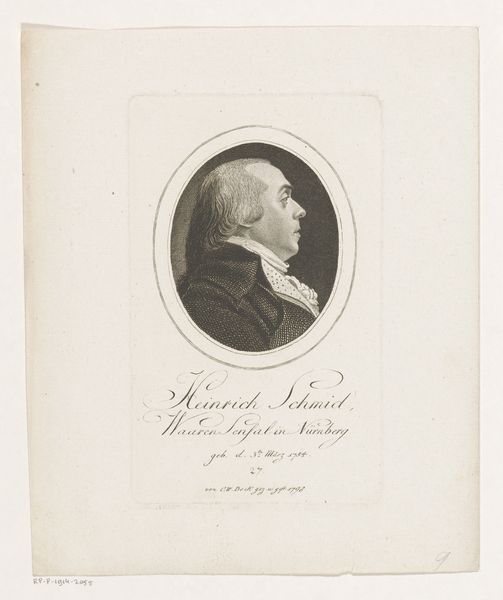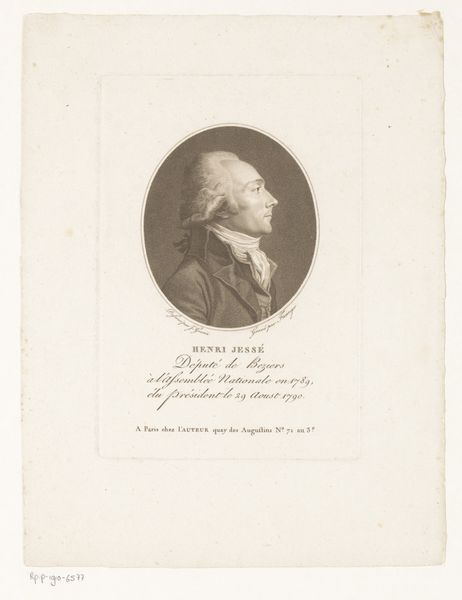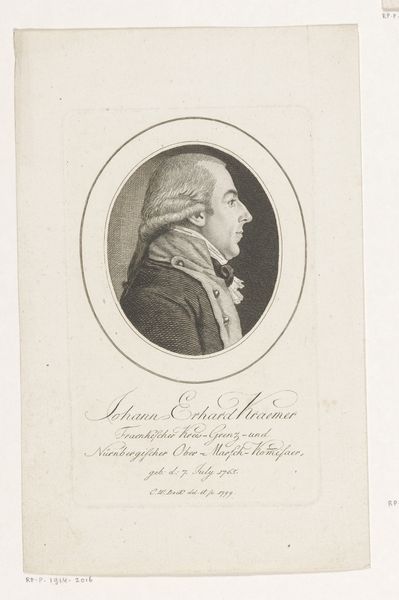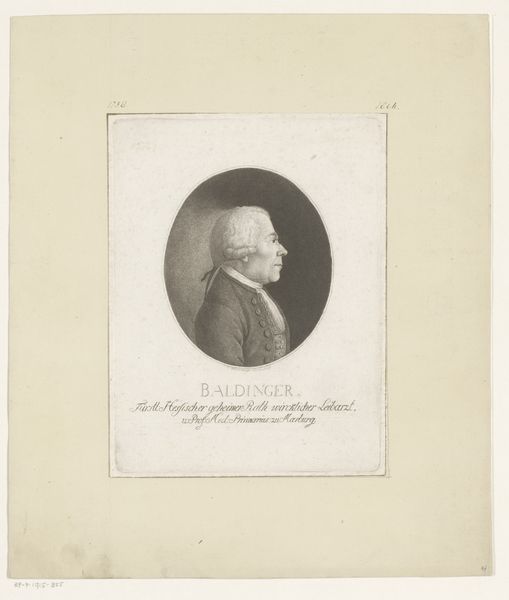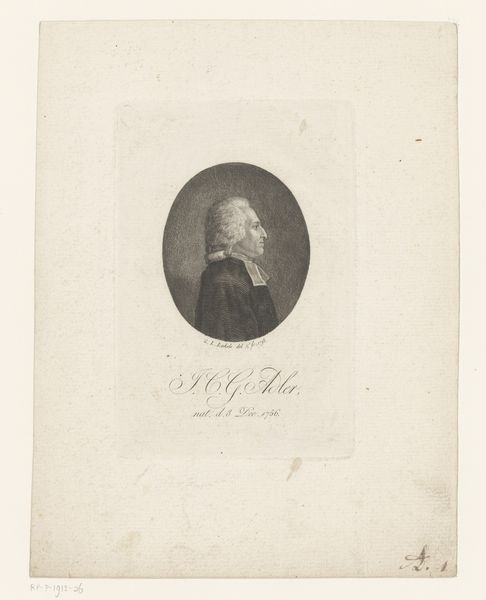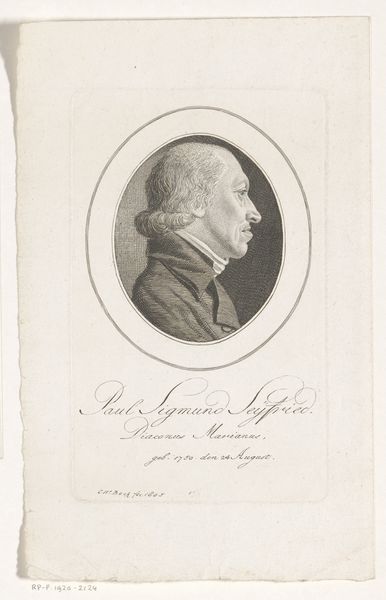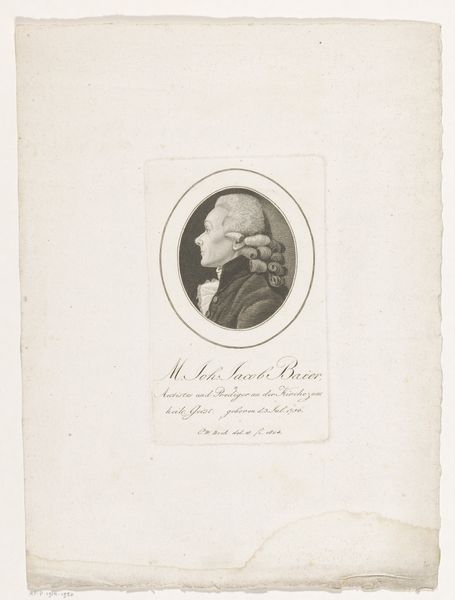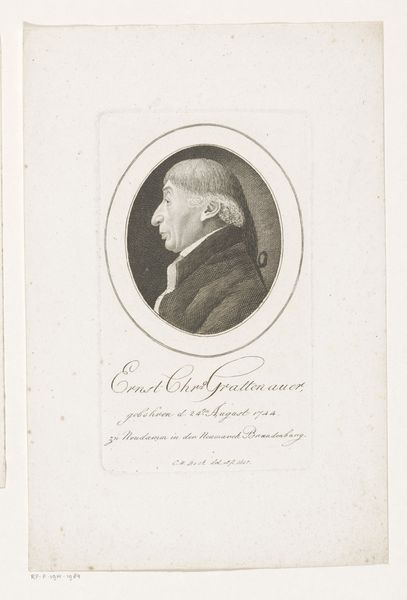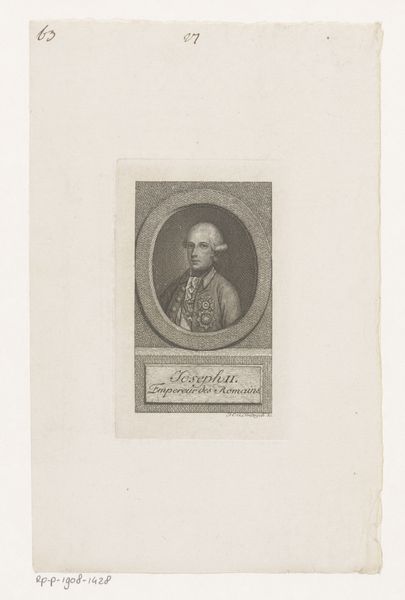
engraving
#
portrait
#
neoclacissism
#
old engraving style
#
figuration
#
line
#
history-painting
#
academic-art
#
engraving
Dimensions: height 156 mm, width 102 mm
Copyright: Rijks Museum: Open Domain
This print of Johann Christoph Jacob Cnopf was made in 1803 by Christoph-Wilhelm Bock. It’s an etching on paper, a relatively democratic medium at the time, allowing for multiple impressions. Think about the labor involved in creating an etching. The artist would have covered a metal plate with a waxy ground, then carefully scratched away the ground to expose the metal underneath. This is followed by immersing the plate in acid, which bites into the exposed lines, creating grooves. The deeper the bite, the darker the line will appear in the print. The plate is then inked, wiped clean, and pressed onto paper, transferring the image. There's a directness to the etched line, a sense of the artist's hand. Each print is an original, carrying the marks of the artist's labor, and the chemical processes used to create it. This is in contrast to the smooth surfaces often associated with high art, reminding us of the value and skill involved in printmaking as a craft.
Comments
No comments
Be the first to comment and join the conversation on the ultimate creative platform.
